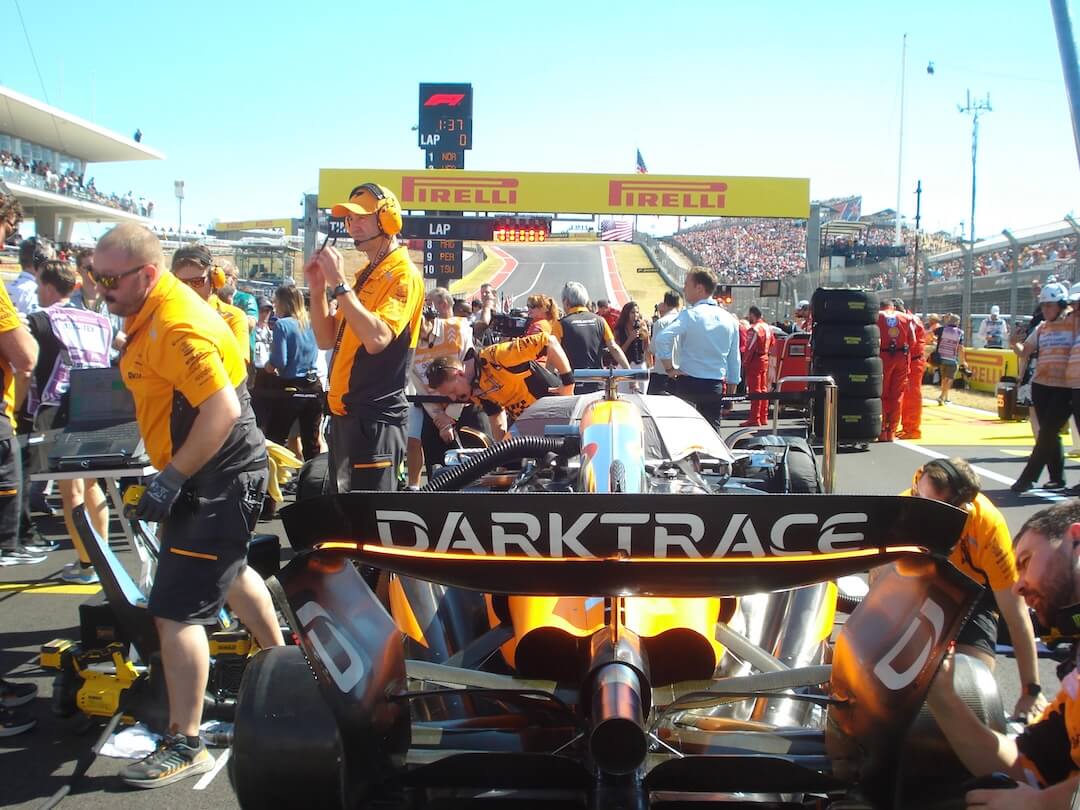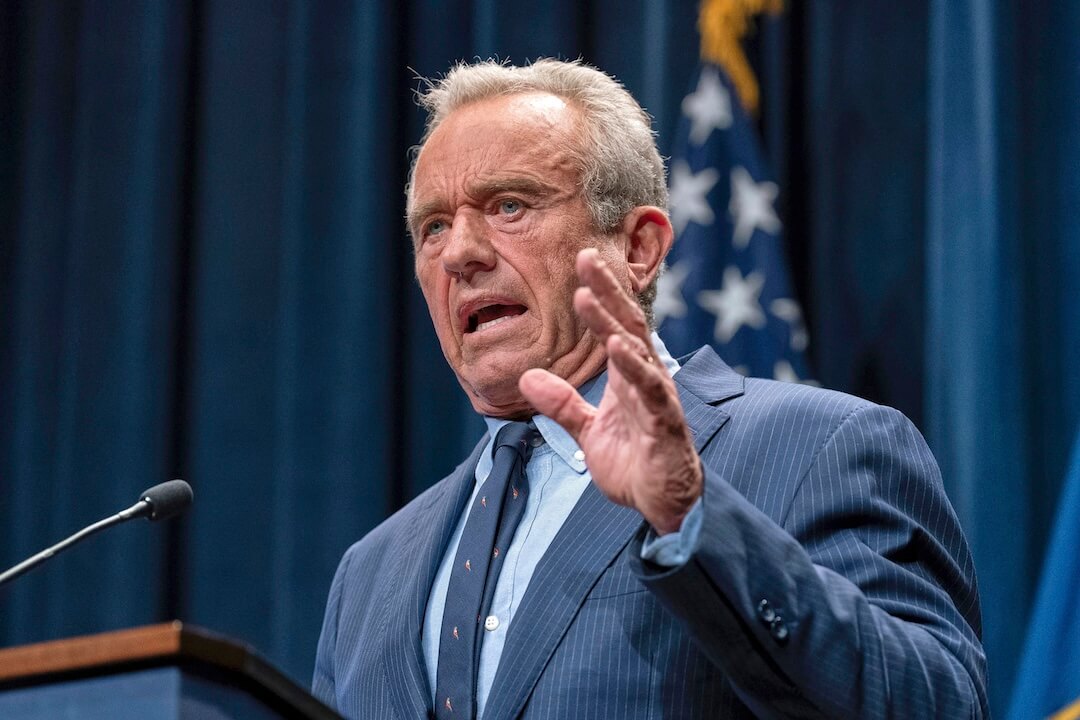My first brush with journalism’s fight for existence with a social media app came in June while hitting tennis balls across a mesh net with my cousin in the Chicago suburbs.
“So, you write for sports teams, right? Like they pay you?” she asked, echoed by the whack of her racket. I sent the ball back with a reply, “Well, no … that would be public relations.”
My cousin is smart, as any 23-year-old law student ought to be. But as we extended our serving streak, one thing became clear: She didn’t know what a journalist was.
As beloved and trusted publications all but close shop and slim sports desks and branded TikTok-able news clips become ubiquitous, her conflation of PR and journalism is a bleak, yet understandable conclusion. What made my serve falter, however, wasn’t that she didn’t know what I did for a living. It was that a blurry line between editorial independence and advertising didn’t strike her as something she should mistrust.
Over the last six months, I’ve discovered she isn’t alone. Two friends I drove home from a soccer game in Minneapolis thought, with a cheery acceptance, that sponsors were cutting my checks. Another cousin, in Indiana, was shocked to discover that working for the people you write about would be a conflict of interest.
Maybe there is a Midwest media literacy crisis I’m not aware of. But if I had to guess, Gen Z’s misunderstanding of journalism is a nationwide — if not global — epidemic.
I’m a Gen Z sports journalist who covers Formula 1, known as the “upper echelon” of motor racing and surging in popularity in the United States thanks to Netflix’s docuseries “Drive to Survive.” I’ve seen the word “journalist” contort to fit the Instagram bios of the sport’s growing number of trackside influencers, appear under presenters’ names during Big Oil-backed interviews and offered up as a race weekend experience in gambling sites’ fan contests.
Each one seems to grab the concept of journalism by the jugular and squeeze the life out of it.
Journalism’s alleged procession toward the grave has been the navel-gazing topic du jour for the last century, yet there are more people “reporting” than ever before. Sport-specific influencers have multiplied over the past four years. They surged as Taylor Swift fans flocked to the NFL, bookish girls lined hockey rinks and ex-boy band fanatics switched to Formula 1, buoying sports leagues’ popularity, cultural relevance and bottom lines.
Sports journalism has transformed as a result. It is a blaring warning siren for anyone who cares to listen.
As the public increasingly turns to influencers, celebrities and ordinary people for sports information over journalists and experts, teams and sponsors can wrest control of the narrative — often scripting branded social content, drawing red lines through preapproved questions and having the final say of approval. Their grip on the news cycle tightens when journalists are offered inferior access.
Creators have a growing place in a multimedia landscape, where just 6% of Americans received their news from print publications in 2024, according to Pew Research. The number of U.S. adults actively searching for news declined last year while one in five Americans routinely turned to influencers for news. The preference for and use of social media as a source of news is higher among more educated individuals in a time when elite Gen Z college students don’t have the capacity to read a sonnet, let alone a lengthy “think piece.” American children spend less time with friends than ever and instead engage with influencers and artificial intelligence as a go-to source of information and socialization.
Newsfluencers have been touted as the future of media. In fact, they are already the present: The Washington Post laid off nearly 100 employees, axing its PR team, in early January as several high-profile journalists left. A memo said, “Talent-driven journalism is the future of media, and personalities and creators will lead the way.” The Post, The Economist, The New York Times and other trusted publications are increasingly employing a vertical video format, some pushing TikToks and Instagram reels to their homepages.
Some motorsport publications are enlisting influencers, who often bring a lack of journalism training and a culture of (at times undisclosed) wining and dining and comped hotel stays to their payrolls, blurring the once-stark boundary between “informer” and “salesperson.”
This pay-for-play model has set a new industry standard in sports journalism, where even traditional newspaper reporters now thank teams on social media for Christmas gifts, take on second gigs for the sports leagues they cover and increasingly accept swag bags, five-course dinners and after-party invites. Any Journalism 101 course will outline why this goes against the pillars of ethical journalism.
Simultaneously, sports publications, once aggressive critics, routinely kill stories for fear of pulled press credentials and advertiser pushback.
While most sports limit press passes to traditional written media, regulations are growing lax. Influencers and ambassadors “report” alongside NFL fields, soccer pitches and tennis courts.
Ashley Kalita, a motor racing content creator, posted a TikTok asking, “Should sports content creators get media credentials?” She argued that short-form video attracted more eyes than news articles (but that the two could work together). Now, some sports leagues offer creator passes: “I don’t have to cold email teams. The raceway is behind me, the series is behind me, so I’m getting interviews lined up, getting to talk to drivers a lot more easily,” Kalita said.
American racing drivers in IndyCar have complained when content creators use limited media pen time to film TikToks about drivers’ favorite Taylor Swift songs.

A McLaren F1 car on the starting grid at the United States Grand Prix in Austin, Texas, in October 2024. (Courtesy: Olivia Hicks)
Formula 1’s all-electric counterpart, Formula E, now groups content creators and journalists together. Its resident “championship journalist,” who works not for a publication but for the company that puts on races, won the top journalism prize in racing this year.
Pop culture podcasters appear in press conferences and influencers enjoy lengthy sit-down interviews with athletes while traditional media cut each other off in 10-minute group media sessions.
Veteran journalists blame slashed sports desks and private equity acquisitions for this media shift and subsequent dissolution of traditional boundaries.
“Their ranks are thinning, making it easier for athletes, owners and leagues to conceal hard truths from the public,” Keith O’Brien, an author and sports journalist, wrote for The Atlantic.
But it’s also because the sports industry is, intentionally or not, crafting a foundation for a journalism-free future. Above all, it is pushing the reporters who stick around into its back pocket. From restricting locker room access to spoon-feeding exclusive interviews, sports reporting isn’t the free arena it once was. The news cycle, and truth, are suffering as a result.
I’m not the ideal person to write this piece. I don’t have decades of experience in the pitlane, or even journalism. But I do have a journalism education. I aced each media ethics and law course in college, and I was raised with a “don’t accept even a cup of coffee” mindset. Still, when I was approached early in my career about a paid trip to write about electric SUVs pirouetting around the driest desert on earth, I accepted with a nauseous unease. My stomach acid didn’t settle when I landed home; I could never write about the sport without comped dinners and plane tickets hanging over my head. I’ve shamefully accepted drinks at rooftop parties and guiltily cut into steak dinners, largely because it is what everyone does. The industry encourages it, disguised by the formality of limited interview access. And maybe it all evens out if every sports team gifts a journalist a goodie bag, but I doubt it.
The slow creep of ad dollars and conflicts of interest are in no way exclusive to sports, let alone Formula 1.
The 2024 election season brought a similar trend to political coverage. More than 200 credentialed content creators attended the Democratic National Convention in August. The event proved that not all passes are created equal. The creators’ passes served as golden tickets, offering glitzier access than credentialed journalists. Kristin Brey, a podcaster and newspaper columnist, had to elbow her way through other journalists for a quote at the Republican National Convention in July and was rarely afforded convention hall access with her standard-issue press pass. When she arrived at the DNC as a content creator, she was escorted to cocktail parties and VIP lounges and was offered one-on-one interviews with the party’s biggest names. Other influencers had their flights and hotels paid for, reported The New York Times.
Entertainment, arts and politics journalists have all messaged me bemoaning similar ethical hurdles and varied levels of unemployment at the hands of TikTok. However, these problems do seem exaggerated in an industry often described as sexy, fast and dangerous; where a small group of media, team personnel and drivers travel to 21 countries across 10 months together.
And it matters. While the sport appears to be as simple as 20 athletes driving in odd shapes, it has international economic, political and ethical implications — from helping an oil state host the U.N. Climate Summit in what Time called “an Orwellian tragedy” to sovereign wealth funds bankrolling teams.
Maybe I’m 30 years behind the times and typing from a lingering old-school newsroom haze, romantically taking a drag of a cigarette while cold-calling, keeping the people I cover an arm’s length away and standing on my soapbox, reciting, “You have to make your reputation on being honest and, y’know … unmerciful.” But time and technology aren’t moving backward.
The newest generation of journalism students seems to understand striking a balance: They understand journalism’s importance in sustaining democracy but are also leaning into the digital age of short attention spans. And if the comments on my initial draft of this piece, published on Substack, are anything to go off of, their professors are catching on, too.
I often scoff when I see social media content creators call themselves journalists. But exiling influencers as the “other” or the “enemy” won’t suddenly make my cousins throw down their tennis rackets to take up arms in the name of journalistic integrity. Maybe the solution isn’t to push social media stars away at all and, instead, hold them closer and say, “Hey, maybe don’t send your questions in advance.”
Oh, and a 22-year-old British race car driver answered my question about the overseas spread of this generational media crisis. When I told him I was a journalist, he asked, “So what do you … journal?”
A version of this piece originally appeared in Formula Flash, the author’s Substack newsletter.







